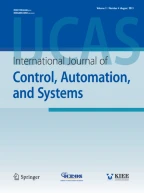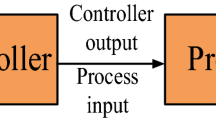
Nowadays, the efficient use of renewable energies is of great importance both socially and economically. This research focusses on capturing energy from the Sun and studying the modelling and control of the SF60 solar furnace at the Plataforma Solar de Almería (PSA) in Spain. The main goal is to regulate the temperature profile of a silicon carbide (SiC) sample. To do this, two main stages of analysis are established. The first one involves modelling the system, where the nonlinear and linear models are designed and calibrated. The next part is the control of the plant, where control strategies based on both linear and nonlinear models are developed, taking into account the speed of response, steady-state specifications, and process constraints. The main control schemes applied have been PI control (with anti-windup mechanism), feedforward control, and PI-based feedback linearisation control, which have been properly tuned using different methodologies. One of the major contributions of this work has been the validation of the developed control schemes in the real installation, after simulation using the nonlinear model. Finally, the advantages and disadvantages of each controller are discussed.
This is a preview of subscription content, log in via an institution to check access.
Price includes VAT (France)
Instant access to the full article PDF.
Rent this article via DeepDyve


The authors state that there is no potential conflict of interest possibly influencing the interpretation of data in the paper. The authors declare that there is no competing financial interest or personal relationship that could have appeared to influence the work reported in this paper.
Publisher’s Note Springer Nature remains neutral with regard to jurisdictional claims in published maps and institutional affiliations.
This work has been financed by the Spanish Ministry of Science [grant number PID2020-112709RB-C21]. The authors would like to thank the Plataforma Solar de Almería for providing access to their facilities.
Andrés López-Palenzuela received his B.S. degree in industrial electronic engineering from the University of Almería, Spain, in 2022, and the Laurea degree in industrial automation engineering from the University of Brescia, Italy, in 2023. He also holds a M.S. degree in industrial engineering from the University Carlos III de Madrid, Spain.
Manuel Berenguel received his B.S. and M.S. degrees in industrial engineering and a Ph.D. degree (Hons.) from the University of Seville, Spain, in 1992 and 1996, respectively. He is currently a Professor of automatic control and systems engineering with the University of Almería, Spain. His current research interests include predictive and hierarchical control, with applications to solar energy systems, agriculture, and biotechnology.
Juan D. Gil received his B.S. degree in industrial electronic engineering and an M.S. degree in advanced and industrial computing from the University of Almería, Spain, in 2015 and 2016, respectively, the Laurea degree in industrial automation engineering from the University of Brescia, Italy, in 2016, and an M.S. degree in industrial engineering and a Ph.D. degree in computer science from the University of Almería, in 2019 and 2020, respectively. He is currently an Assistant Professor at the University of Almería. His research activity is primarily focused on the implementation of hierarchical and predictive control strategies for solar-powered membrane desalination systems and solar thermal systems.
Lidia Roca received her B.S. degree in electronic engineering from the Faculty of Sciences of the University of Granada, Spain, in 2004 and an M.S. degree in solar energy and a Ph.D. degree in computer science from the University of Almería, Spain, in 2007 and 2009, respectively. She is currently with the Solar Thermal Applications Unit, Plataforma Solar de Almería, Spanish Centro de Investigaciones Energéticas, Medioambientales y Tecnológicos (CIEMAT). Her main research lines are the modelling, control, and optimisation of systems powered by solar thermal energy, mainly solar thermal desalination.
José Luis Guzmán received his B.S. degree in computer science engineering and an European Ph.D. degree from the University of Almería, Spain, in 2002 and 2006, respectively. He is currently a Full Professor of automatic control and systems engineering with the University of Almería. His research interests focus on the fields of control education, model predictive control techniques, PID control, and robust control, with applications to agricultural processes, solar plants, and biotechnology.
José Rodríguez is O&M manager of Solar Furnaces & Dishes facilities at PSA. He holds a Technical Engineering degree in mechanical engineering from the University of Córdoba, Spain. His research interests include experience in solar concentrating systems (tower systems, parabolic trough systems, disc-stirling systems, solar furnaces), high-temperature material testing in controlled atmosphere and vacuum, volumetric, rotary, and particle receivers, and solar chemistry tests (H2 production).